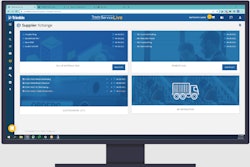In today’s tough economic climate, customers expect exceptional service and competitors wait eagerly in the wings should you fail to deliver. As a result, it’s more crucial than ever that you ensure smooth order cycles and a company-wide, clear understanding of your customer. But, faced with this intense pressure, it is important that you take a step back and definitively identify the problems you need to tackle. Consider these three ways data analysis can help you do just that:
1. Eliminate Assumptions
Data takes the guesswork out of decision-making. For example, when dealing with errors, delays, and frustrated customers, it’s easy to make assumptions, placing the blame on employee negligence. But data can tell another story. When analysing your order flow, you’ll quickly identify peak periods. If you still use manual processing, you may find that the real issue behind errors and delays is order volume rather than staff carelessness. After all, if your CSRs are suddenly being inundated with double the typical number of orders, they may be rushing to process them before order cut-off times, causing mistakes.
Therefore, analysing real-world order data, especially measuring for trends over the long-term, will not only ensure you pinpoint the real issue immediately — in this case, insufficient staff or processing technology — but will also help you take a proactive approach to these bottlenecks, predicting and actively resolving them before they can create serious problems with customers.
2. Make Educated Business Decisions
Your long-term decisions can mean the difference between business success and failure. Basing them on factual data will ensure you focus your time and money on solutions that really generate results. Taking my previous example, when an issue is identified with order volume, you have two options to fix it – hiring additional staff or implementing technology to automate sales order processing. It’s crucial you pick the right one. Measuring the percentage of orders you receive from each channel — email, fax or phone — will help you decide. If the majority of your orders arrive by phone, then recruiting more CSRs to answer calls is the best solution. But, if your customers are emailing and faxing their orders in, automation technology will deliver faster and more accurate processing.
3. Know Your Customer
Do you know your customer’s buying habits? Who they are, where do they shop and when? Establishing concrete customer profiles through your order data will help your team rapidly improve your inventory control and marketing initiatives. Take the example of an HVAC distributor. Analysing their data, they may find their order volume peaking during summer when air conditioners are running full tilt and breaking down. Spotting this seasonal buying trend, they can then ensure they stock a larger number of replacement parts during this period to meet demand. They can also identify key marketing opportunities for the on and off-season, spotlighting specific products when they know their customers need them most.
Ultimately, as you begin to collect data, don’t overthink it. Decide on the insights which will help you maintain your key value proposition and measure those. As you learn from that data, other key items to analyse will become evident, creating a cycle of discovery and better decisions.
So, are you using data analytics? If so, I’d love to know what kind of data has helped your business improve.
Brent Halverson is president and CEO of ecmarket, the creators of Conexiom. Contact Brent at [email protected]
Brent will be a panelist on Industrial Distribution's Nov. 9 webinar: "Why Distributors Should Focus On Analytics Intelligence." Register for the free event here.























